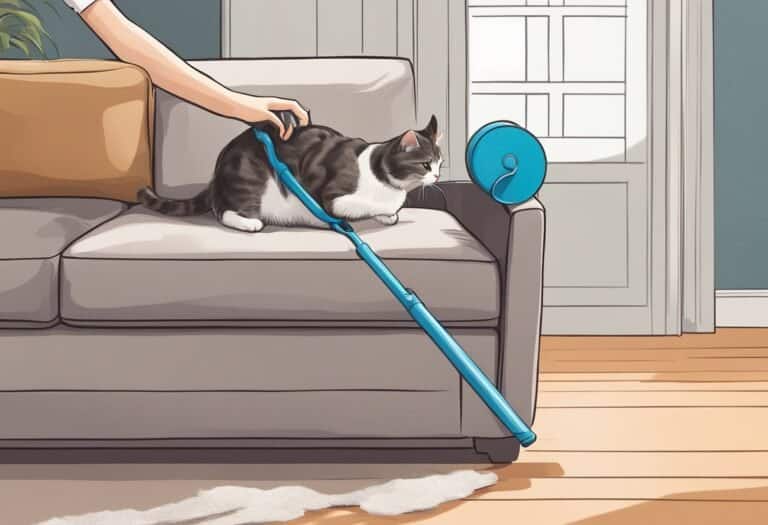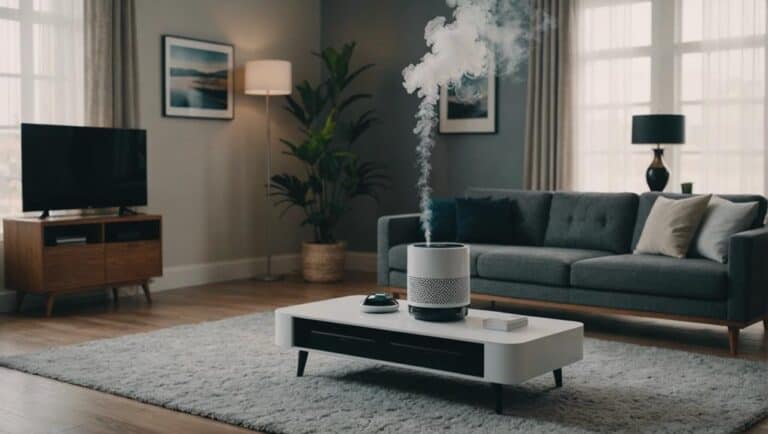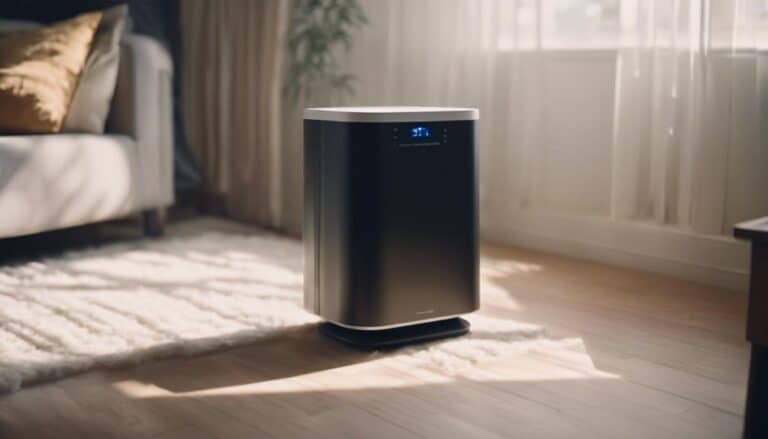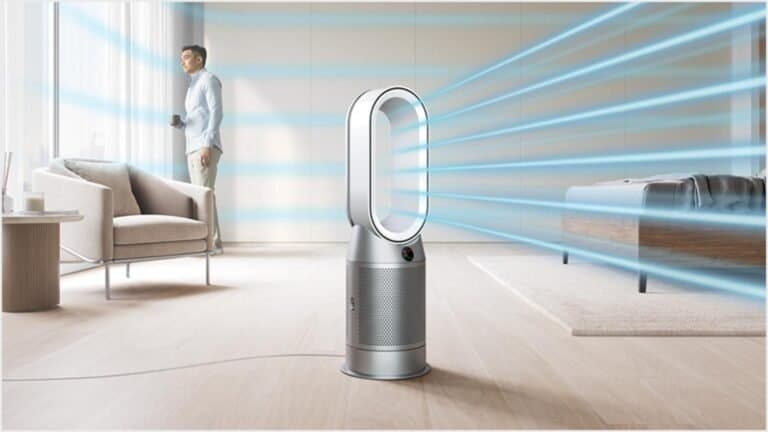Effective Strategies for Concealing the Lingering Odor of Smoke
Tobacco smoke can leave behind a powerful and persistent odor that many find unpleasant. Whether you are a smoker or have recently dealt with secondhand smoke exposure, it is important to know effective strategies for concealing the lingering odor of smoke.
In this article, we will explore various solutions and techniques that professionals recommend to eliminate or minimize the scent of smoke from your environment. From simple household remedies to advanced air purifying systems, these strategies will help you create a fresh and clean atmosphere free from the tell-tale signs of tobacco use.
So, if you want to maintain a pleasant living space or office without compromising on hygiene, keep reading as we delve into the world of effective strategies for masking the obnoxious smell of smoke.

Choosing the Right Air Fresheners: Finding the most effective products to combat smoke odor
Choosing the Right Air Fresheners
When it comes to combatting smoke odor, choosing the right air fresheners is essential. Here are some effective products to consider:
- Activated charcoal: This natural odor absorber works by trapping and neutralizing smoke particles in the air.
- Ozone generators: These devices release ozone molecules that attach to and break down smoke particles, eliminating odors.
- Gel-based deodorizers: Designed specifically for absorbing strong odors like smoke, gel-based deodorizers continually release fragrance over time.
It’s important to note that not all air fresheners are created equal when it comes to combating smoke odor. Read product labels carefully, look for those specifically designed for eliminating strong smells like smoke, and consider trying different options until you find what works best for your space.
Ventilation Techniques: How to properly air out your space to remove smoke smell
When it comes to getting rid of the lingering odor of smoke, proper ventilation is key. Here are a few techniques you can use to effectively air out your space and eliminate that unpleasant smell:
- Open windows and doors:
- Airing out your space by opening windows and doors allows fresh air to circulate, replacing the smoky odor with clean, outdoor air.
- Aim for cross-ventilation by opening windows on opposite sides of the room or building.
- Use fans:
- Place box fans or portable fans near open windows or doors to enhance airflow and encourage faster removal of smoke smell.
- Point the fans towards the outside, creating an outward breeze that carries away any lingering odors.
- Consider natural remedies:
- Incorporate natural odor absorbers such as baking soda, activated charcoal, or vinegar into your ventilation strategy.
- Place bowls filled with these substances around your space to help neutralize the smoke smell over time.
Cleaning Upholstery and Fabrics: Tips for removing smoke odor from furniture and clothing
Removing Smoke Odor from Furniture
To remove smoke odor from furniture, start by thoroughly vacuuming the upholstery to remove any loose debris and particles. Once the surface is clean, sprinkle baking soda on the affected areas and let it sit for at least 30 minutes to absorb the odor. Afterward, use a stiff brush or sponge to scrub the baking soda into the fabric. Vacuum again to remove any remaining residue.
Treating Smoky Clothing
For smoke-scented clothing, begin by washing them with regular laundry detergent in cold water. Add half a cup of distilled white vinegar during the rinse cycle to help neutralize odors further. If necessary, repeat this process until all smells have dissipated.
For delicate fabrics that cannot be machine washed or soaked such as silk or wool garments, consider using an odor-neutralizing spray specifically designed for these materials. Spray lightly onto the fabric’s surface and allow it to air dry completely before wearing or storing.
Remember: when treating upholstered furniture or clothing for smoke odor removal:
- Test any cleaning solution on a small inconspicuous area first.
- Patience is vital; multiple treatments may be needed.
- Consider seeking professional assistance if persistent odors remain despite your efforts.
Dealing with Carpets and Rugs: Strategies for eliminating smoke smell from soft surfaces
Removing Smoke Smell from Carpets and Rugs
Carpets and rugs are notorious for trapping smoke smells, which can be challenging to remove. However, there are several effective strategies you can use to eliminate the lingering odor of smoke from these soft surfaces:
- Vacuum regularly: Start by vacuuming your carpets and rugs thoroughly to remove any surface debris or loose particles that may be holding onto the smoke smell.
- Baking soda treatment: Sprinkle a generous amount of baking soda on the affected areas and let it sit overnight. The baking soda will help absorb the odors. In the morning, vacuum up the baking soda.
- Steam cleaning: Consider using a steam cleaner specifically designed for carpets and rugs to deep clean them and remove any remaining traces of smoke smell.
- Professional cleaning services: If all else fails or if you want a more thorough approach, hiring professional carpet cleaners who specialize in removing odors could be beneficial.
Odor Absorbing Materials: Using activated charcoal and other natural remedies to neutralize smoke odor
Odor Absorbing Materials
One effective strategy for neutralizing the lingering odor of smoke is to use odor absorbing materials, such as activated charcoal. Activated charcoal is a natural substance that has the ability to trap and absorb odors. It works by adsorption, which means that it attracts molecules and holds them on its surface.
Some key points about using activated charcoal as an odor absorbing material include:
- Easy application: Activated charcoal can be easily placed in small bags or sachets and strategically positioned around the area affected by smoke odor.
- Long-lasting effectiveness: Unlike air fresheners that only temporarily mask odors, activated charcoal continues working until all the odorous particles are absorbed.
- Natural and safe: Activated charcoal is a non-toxic substance, making it safe to use in homes without any risk of chemical exposure.
In addition to activated charcoal, there are other natural remedies that can help neutralize smoke odor:
- Baking soda: Sprinkling baking soda on carpets or upholstery before vacuuming can help absorb lingering smoke smells.
- White vinegar: Placing bowls filled with white vinegar around the room overnight can also assist in reducing smoke odor.
- Essential oils: Adding a few drops of essential oils like lavender or eucalyptus to an oil diffuser not only adds pleasant scents but also helps combat unwanted smoky smells.
By utilizing these natural options along with activated charcoal, you can effectively eliminate stubborn smoke odors from your living space.
Eliminating Smoke Odor from Walls and Surfaces: Techniques for deep cleaning and repainting to remove smoke smell
Deep Cleaning Techniques for Removing Smoke Odor
One effective technique for eliminating smoke odor from walls and surfaces is through deep cleaning. This involves thoroughly scrubbing the affected areas with a mixture of warm water and vinegar or using specialized smoke odor removal products. By focusing on the source of the smell, such as nicotine residue or soot, deep cleaning can effectively break down and remove the particles causing the odor.
Another method to consider is ozone treatment. Ozone generators release high levels of ozone into a space, which helps neutralize smoke odors by breaking down chemical compounds left behind by smoke particles. It’s important to note that this technique should only be performed by professionals trained in its safe application.
Repainting to Remove Lingering Smoke Smell
Repainting surfaces is often necessary when dealing with stubborn smoke odors that seem impossible to eliminate. Before applying new paint, it’s crucial to first clean the walls and surfaces thoroughly using techniques mentioned earlier.
To ensure maximum effectiveness in sealing off residual odors, opt for a primer specifically designed for blocking out smells. Applying multiple coats of quality paint after priming will further aid in concealing any remaining lingering odor.
By combining these deep cleaning techniques with repainting strategies, homeowners can successfully remove smoke odors from their walls and surfaces, restoring freshness back into their living spaces.
Managing Smoke Odor in Vehicles: Tips for freshening up your car’s interior after smoking
1. Deep Clean the Interior
- Start by thoroughly cleaning and vacuuming the interior of your car, paying close attention to areas where smoke residue might accumulate, such as upholstery, carpets, and air vents.
- Remove any ashtrays or cigarette lighters from the vehicle to prevent further smoke odor.
2. Use Baking Soda to Absorb Odors
- Sprinkle baking soda generously on all surfaces inside your car and let it sit overnight before vacuuming it up the next day. Baking soda acts as a natural odor absorber.
- You can also place an open box of baking soda under each seat to continue absorbing odors over time.
3. Utilize Air Fresheners
- Choose air fresheners with strong scents that help mask smoke odors rather than just covering them up temporarily.
- Opt for specific deodorizing products designed specifically for eliminating smoke smells for more effective results.
4. Allow Fresh Air into Your Vehicle
- Roll down the windows while driving to allow fresh air in and circulate within your vehicle, helping reduce lingering smoke odors
Advanced Solutions: Exploring professional-grade air purifiers and ozone generators for smoke odor removal
Investing in a professional-grade air purifier or ozone generator can be an effective strategy for eliminating the lingering smell of smoke. These high-powered machines are designed to filter out fine particles and neutralize odors, ensuring a fresh indoor environment.
Air purifiers utilize HEPA filters that trap even the smallest airborne smoke particles, preventing them from circulating in your home. By continuously running these devices, they help improve air quality by removing not only the odor but also allergens and other pollutants.
On the other hand, ozone generators release ozone molecules into the air to break down organic compounds responsible for producing unpleasant smells like tobacco smoke. However, it’s crucial to use caution when operating such devices as excessive exposure to ozone can cause respiratory irritation. It’s recommended to follow manufacturer guidelines and ensure proper ventilation while using an ozone generator.
Both air purifiers and ozone generators have their own advantages and limitations depending on your specific needs. Consulting with professionals or doing thorough research before making a purchase will help you determine which option is best suited for your situation.







2 Comments